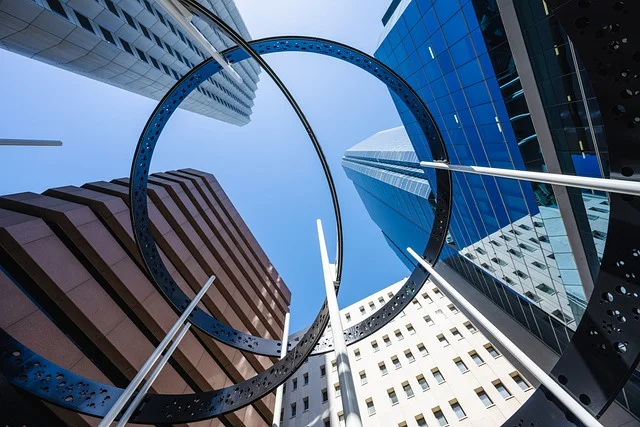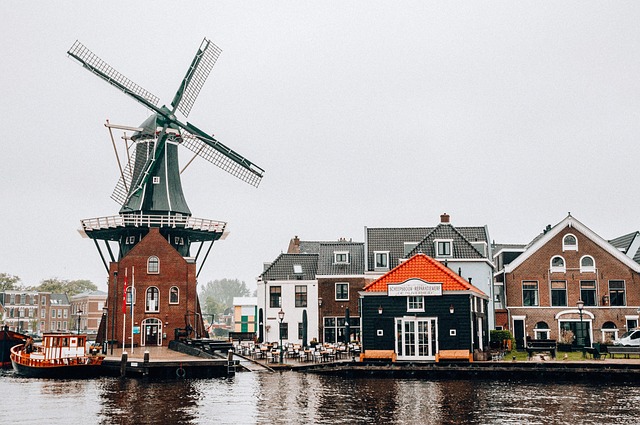Dutch Art and Architecture: A Historical Overview

The Netherlands has a rich and diverse cultural heritage, with art and architecture playing a central role in its history. From the Golden Age of Dutch painting to the innovative designs of modern architecture, the Netherlands has made significant contributions to the global art and architectural landscape. This article provides a historical overview of Dutch art and architecture, exploring key periods, styles, and influential figures that have shaped the nation’s artistic identity.
1. Medieval Period (12th–15th Century)
The medieval period in the Netherlands was marked by the construction of grand churches and the development of early Dutch painting.
Architecture
- Romanesque and Gothic Styles: Early Dutch architecture was influenced by Romanesque and Gothic styles, characterized by thick walls, pointed arches, and intricate stone carvings.
- Notable Examples: The Utrecht Cathedral and St. John’s Cathedral in ‘s-Hertogenbosch are prime examples of Gothic architecture in the Netherlands.
Art
- Illuminated Manuscripts: Monastic communities produced beautifully illuminated manuscripts, showcasing intricate designs and religious themes.
- Early Panel Painting: The late medieval period saw the emergence of panel painting, with artists like Geertgen tot Sint Jans creating religious works that laid the groundwork for future developments.
2. The Dutch Golden Age (17th Century)
The 17th century, known as the Dutch Golden Age, was a period of unprecedented economic prosperity and cultural flourishing. This era produced some of the most renowned artists and architects in Dutch history.
Art
- Rembrandt van Rijn: One of the greatest painters of all time, Rembrandt is known for his masterful use of light and shadow, as well as his profound psychological insight. Notable works include “The Night Watch” and “The Anatomy Lesson of Dr. Nicolaes Tulp.”
- Johannes Vermeer: Vermeer’s works are celebrated for their meticulous detail and use of light. Famous paintings include “Girl with a Pearl Earring” and “The Milkmaid.”
- Frans Hals: Known for his lively portraits, Hals captured the character and vitality of his subjects. Notable works include “The Laughing Cavalier” and “Banquet of the Officers of the St George Militia Company.”
Architecture
- Dutch Classicism: The Golden Age saw the rise of Dutch Classicism, characterized by symmetry, proportion, and the use of classical elements. Notable architects include Jacob van Campen and Pieter Post.
- Notable Examples: The Royal Palace of Amsterdam and Mauritshuis in The Hague are iconic examples of Dutch Classicism.
3. The 18th and 19th Centuries
The 18th and 19th centuries were periods of transition, with Dutch art and architecture influenced by international trends such as Rococo, Neoclassicism, and Romanticism.
Art
- Romanticism: Artists like Barend Cornelis Koekkoek and Johan Barthold Jongkind embraced Romanticism, focusing on landscapes and the sublime beauty of nature.
- The Hague School: In the late 19th century, the Hague School emerged, with artists like Jozef Israëls and Hendrik Willem Mesdag depicting rural life and landscapes in a realistic style.
Architecture
- Neoclassicism: The 18th century saw a revival of classical architecture, with buildings featuring columns, pediments, and symmetrical designs. Notable examples include the Rijksmuseum (original design) and Felix Meritis in Amsterdam.
- Eclecticism: The 19th century was marked by eclectic styles, combining elements from various historical periods. The Central Station in Amsterdam is a prime example.
4. The 20th Century: Modernism and Beyond
The 20th century brought significant changes to Dutch art and architecture, with the rise of modernism and avant-garde movements.
Art
- De Stijl Movement: Founded in 1917, the De Stijl movement was led by artists like Piet Mondrian and Theo van Doesburg. It emphasized abstraction, geometric forms, and primary colors. Mondrian’s “Composition with Red, Blue, and Yellow” is a quintessential example.
- CoBrA Movement: In the mid-20th century, the CoBrA movement emerged, with artists like Karel Appel and Constant Nieuwenhuys creating expressive, abstract works.
Architecture
- Modernism: Dutch architects embraced modernism, focusing on functionality, simplicity, and the use of new materials. Gerrit Rietveld is a key figure, known for his Rietveld Schröder House in Utrecht.
- Structuralism: In the mid-20th century, structuralism emerged, with architects like Aldo van Eyck and Herman Hertzberger designing buildings that emphasized social interaction and modular structures.
5. Contemporary Dutch Art and Architecture
The Netherlands continues to be a hub of artistic and architectural innovation, with contemporary artists and architects pushing boundaries and exploring new ideas.
Art
- Conceptual Art: Artists like Marina Abramović and Jan Dibbets have made significant contributions to conceptual art, focusing on ideas and processes rather than traditional aesthetics.
- Street Art: Cities like Amsterdam and Rotterdam are known for their vibrant street art scenes, with artists like Ives One and The London Police creating dynamic public artworks.
Architecture
- Sustainable Design: Dutch architects are leaders in sustainable design, with projects like the Eco-Village in Almere and The Edge in Amsterdam setting new standards for green building.
- Innovative Structures: The Netherlands is home to innovative architectural projects, such as Rotterdam’s Markthal and Amsterdam’s Eye Film Museum, which combine functionality with striking design.




